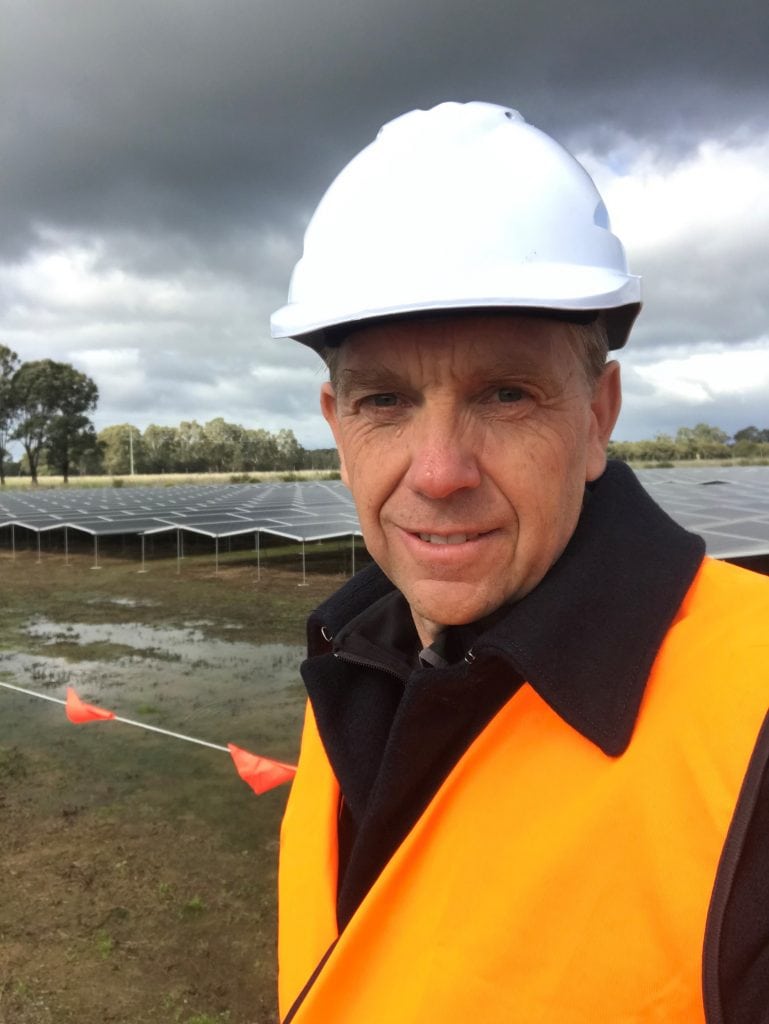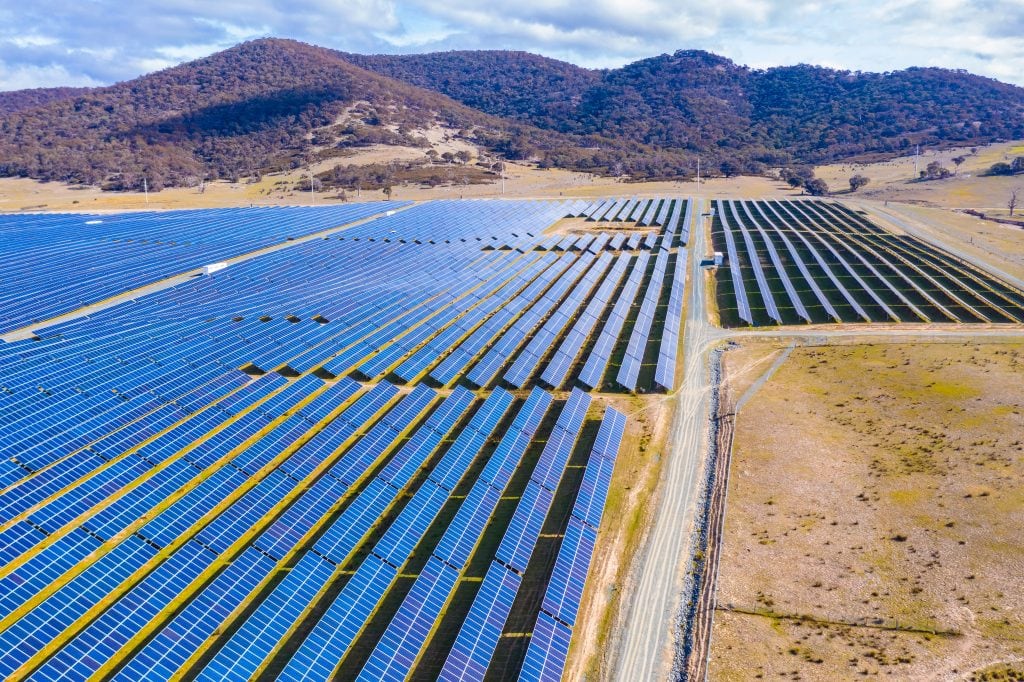The “Canberra bubble” is something of a derisive term in Australia, referring to the niche interests of politicians, lobbyists and media insiders in the country’s capital — the equivalent of being entrenched “inside the Beltway” of Washington D.C.
So when populist politicians want to disparage issues like climate change, they often frame them as only of concern to the elites residing in this bubble while so-called ordinary Australians get on with the day-to-day reality of paying bills and putting food on the table.
But as energy bills nationally surge due to high prices for coal and gas triggered by Russia’s invasion of Ukraine, and aging coal-fired power plants increase strain on the system due to a large number of maintenance outages, it turns out that the Canberra bubble offers not a distraction from cost-of-living pressures, but protection from them.
Embracing renewables
The story really starts ten years ago when the Australian Capital Territory (ACT) government, which oversees Canberra, embarked on a mission to achieve a target of 90 percent renewable energy by 2020, a goal later upgraded to 100 percent. It was dismissed as an idealistic folly that would cost a fortune and prove impossible to achieve.
The reality has been anything but. Remarkably, the ACT reached its target in under a decade, and Canberrans today enjoy the cheapest energy bills in Australia’s national energy market while the rest of the country grapples with the skyrocketing costs of fossil fuels. In doing so, the ACT has become something of a proving ground that could enable the new federal government to justify rolling out this kind of scheme nationally.
Nestled in the Australian Alps about halfway between the major cities of Sydney and Melbourne, the ACT is effectively a city-state dominated by the small urban center of Canberra, home to just over 400,000 residents.
The dense bushland surrounding Canberra has proved particularly vulnerable to Australia’s increasingly severe climate catastrophes, which Simon Corbell, the ACT’s energy and climate change minister from 2011 to 2016, says was a key reason why he was able to secure public support for such ambitious emissions reduction action.

“Canberrans have lived experience of the rapidly changing climate. We had a devastating bushfire event in 2003 and the Millennium Drought, which saw severe water shortages,” says Corbell, who is now CEO of the Clean Energy Investor Group.
It was thus alarming to the ACT’s residents when a conservative federal government swept to power in 2013 promising to scrap the country’s carbon tax and unwind efforts to transition to a green economy. The ACT government had already begun its pursuit of the most ambitious renewable energy target in the country and suddenly it was left without a federal partner.
Corbell recalls scathing criticism being heaped on the territory’s plans from the media and other governments, “particularly the federal government.” He also points out that Australian state governments were discouraging investment in renewables in the early 2010s, introducing strict planning conditions that made it “almost impossible” to build wind farms.
“It was a very difficult time for the renewable sector,” he says. “A lot of people said states and territories shouldn’t go it alone, we were too small, we wouldn’t make a difference.”
But, where others saw a crisis, the ACT government saw opportunity because suddenly renewables developers had nowhere else to turn.
A long-term vision
At first, Corbell thought offering up government grants to build wind farms and solar was the best way forward. After speaking with developers, however, he realized what they needed was not upfront capital but long-term certainty.
The ACT launched a system of “reverse auctions” where developers would make competing offers to supply the territory with renewable energy. Whoever offered the lowest price won the auction — and a decades-long contract.
At the time, the contracts were slightly more expensive than wholesale energy prices. But Corbell says it was not as high as experts had warned as the reverse-auction process had found out exactly just how cheap renewables could be built in practice.
“It was the value of price discovery, the real price in a real market,” Corbell says. “Each auction we held, that price continued to go down as we published the winning price each time, the market knew what we were paying, and bidders would always come in and make sure they bid that price or lower.”
Megan Ward, a former public servant who managed the ACT government’s renewable energy projects, says the introduction of the scheme was a case of “perfect timing.”
“Both solar and wind technology were starting to mature and there were few other support mechanisms nationally,” she says. “This meant we received the most competitive projects, as well as projects that could realistically be delivered for the agreed price. Each auction process has consistently broken price records for the cheapest renewable energy in Australia.”

Energy policy expert Dr Lee White of the Australian National University, the lead author of a research paper on the ACT initiative, says it provided a safe haven for renewable developers at a critical moment.
“The ACT’s renewables plan provided an important point of stability in an unstable policy environment,” she says. “When policies supporting renewable generation shift rapidly over time, it can deter investment due to the uncertainty on levels of return.”
Francois Debaillon, who was working at the time as project manager at renewable energy developer Neoen Australia, says the ACT plan was key to bringing to life the 316 megawatt Hornsdale Wind Farm, which today consists of 99 wind turbines.
“The federal government was watering down its own renewable energy target, and consequently the entire renewable industry in Australia was stalled with a dire outlook ahead,” he says. “The ACT government’s ambition to power the territory with 100 percent renewable energy, led by the bold vision of Corbell, allowed the most competitive projects in the country to get built by providing long term revenue certainty. Thanks to the 20 year contract to sell power to the ACT, Neoen, the wind farm owner, could focus on delivering a quality project without having to risk the effect of long-term electricity prices.”
The ACT government also figured the arrangement was a long-term safeguard for Canberra against the kind of future price rises expected during the turbulence of a global transition from fossil fuels to green energy.
Indeed, while the rest of the country is now grappling with rising energy prices, Canberrans are still enjoying the affordable energy agreements struck a decade ago. Retail electricity prices are sharply spiking all over the country — including in New South Wales, the large state that entirely surrounds the ACT, where bills are set to climb by between 8.5 and 19.7 percent. Electricity users in the ACT, meanwhile, are seeing electricity costs only get cheaper, with a drop of at least 1.25 percent.
Other Australian states are now emulating the ACT reverse-auction scheme as momentum builds behind the transition to renewables.
Canberra is also welcoming in a renewables-friendly government at a federal level, with the center-left Labor party winning power in May after nine years of conservative rule. The new Australian government has a more ambitious climate agenda, planning to reach 82 percent renewable energy nationally by 2030.
As federal politicians descend on the national parliament house in Canberra to debate how to get there, they won’t need to look far for inspiration.









